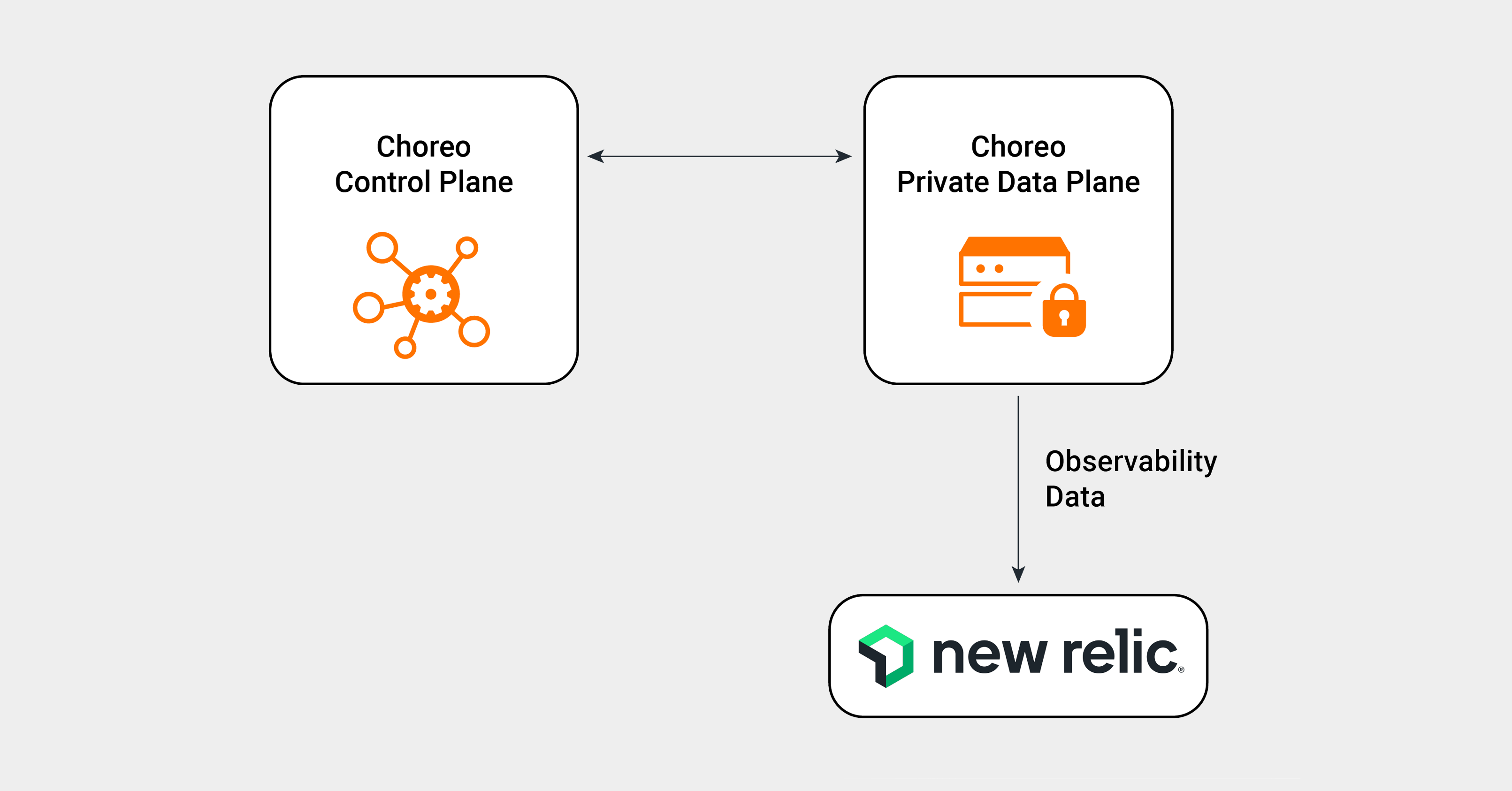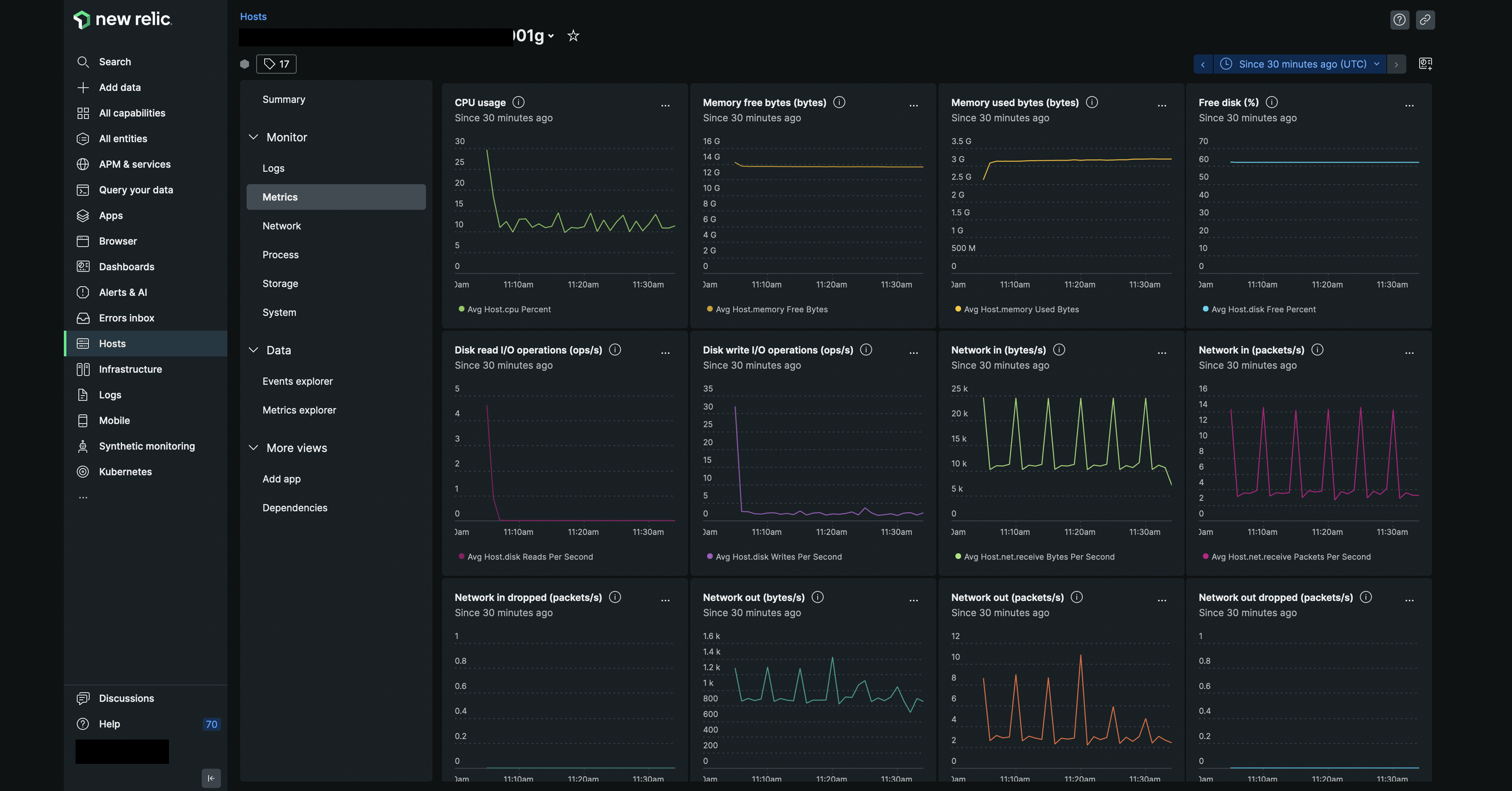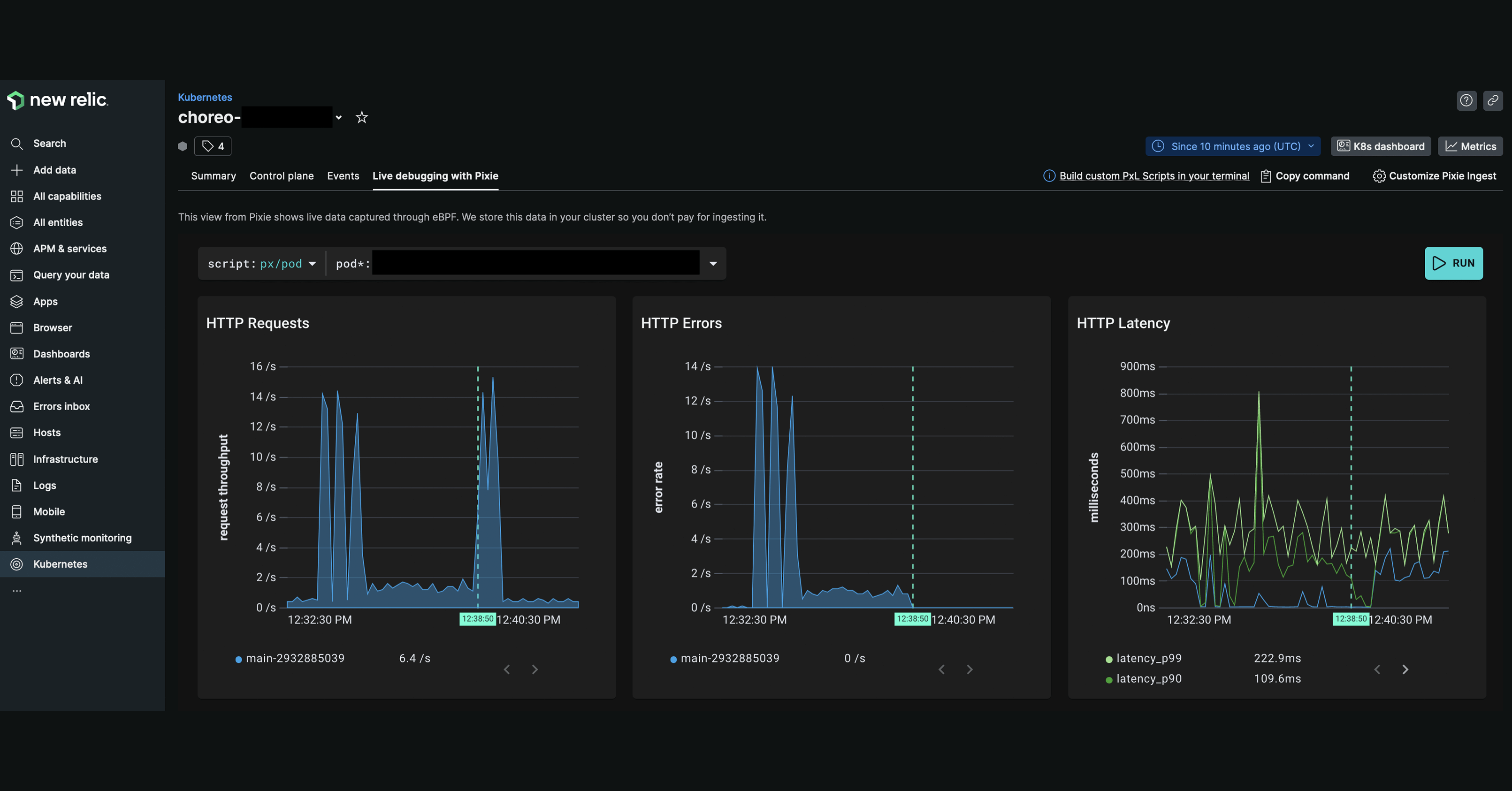Observing Choreo Private Data Planes With New Relic

- Nilushan Costa
- Senior Software Engineer - WSO2

Disclaimer: The New Relic logo and trademark is owned by New Relic Inc and its respective content owners. New Relic is not affiliated with, nor has it endorsed or sponsored Choreo and no such endorsement or affiliation is implied. The New Relic logo has been used without the permission of the copyright holders under Section 107 of the United States Copyright Act, for the purpose of Fair Use, in describing the interoperability of the services.
In the modern world, digital transformation has become vital for enterprises. A digitally transformed enterprise may use numerous computing resources to run various applications for its business needs.
Once computing resources and applications have been put to use in production environments, they must be observed. This helps enterprises understand how the resources/applications are performing, realize if they are being used cost-effectively, and investigate what went wrong when things don’t go as planned.
The ability for users to observe their components is also vital in Choreo. Customers using Choreo’s cloud data plane or private data planes can benefit from its built-in observability view. This view can be used to understand resource usage, view CPU flame graphs, analyze logs, monitor application performance, and even observe individual requests related to components.
However, some private data plane customers may prefer to use third-party observability platforms they’re already familiar with or ones commonly used within the enterprise.
As the first step towards addressing such requirements, Choreo now allows you to observe private data planes with New Relic.

Figure 1: High-level architecture
This can be done at several levels. Infrastructure level monitoring allows you to assess the cluster that runs the private data plane. Monitoring the performance of individual components is crucial, and is possible with Pixie, which is built into New Relic. Pixie allows you to observe Choreo components in terms of metrics such as throughput, response time, error rate, and much more. Furthermore, logs of Choreo components would also help you gain insights into what’s occurring within components. All these observability capabilities of New Relic will help you maintain healthy Choreo components in your private data plane. This is illustrated by Figures 2 and 3.

Figure 2: Infrastructure observability

Figure 3: Application observability
Although New Relic is the first external observability platform to be supported by Choreo’s private data planes, it’s far from the last. Choreo will continue adding to its observability platforms list, so stay tuned for future announcements.
Get Started
Setting up New Relic observability for your private data plane requires the help and support of the WSO2 team. Once you request this capability, WSO2 will set up the New Relic agent in the private data plane cluster. Observability data will then be published directly from the private data plane cluster to New Relic. To get started, please contact your WSO2 Account Manager or contact us here.
Conclusion
Observing the private data plane and the components running in it is essential to ensure a healthy deployment. It’s now possible for you to use New Relic to observe Choreo private data planes. To learn more about Choreo, check the official Choreo documentation, including our Quick Start Guide.
